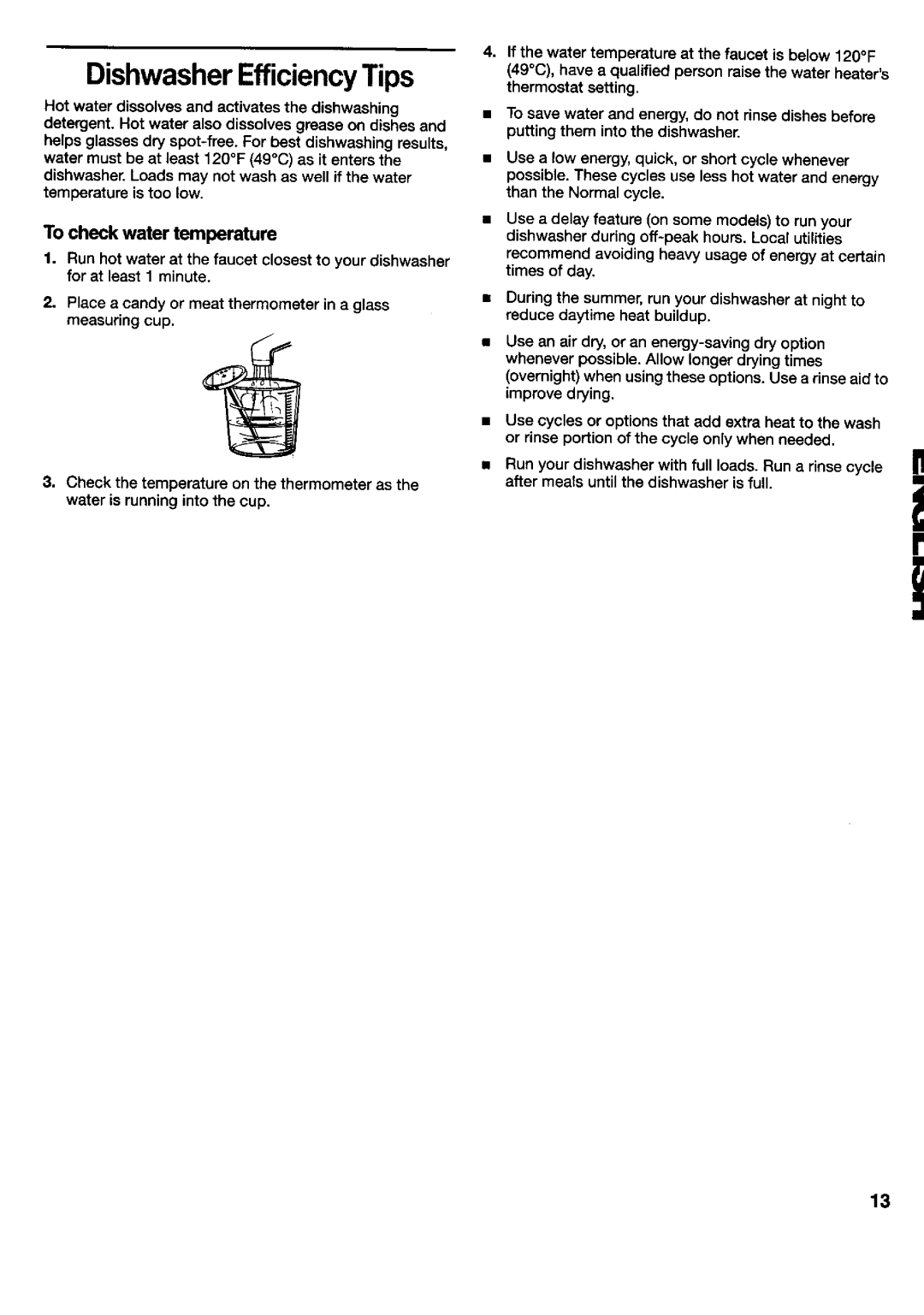
DishwasherEfficiencyTips
Hot water dissolves and activates the dishwashing
detergent. Hot water also dissolves grease on dishes and helps glasses dry
To check water temperature
1.Run hot water at the faucet closest to your dishwasher for at least 1 minute.
2, Place a candy or meat thermometer in a glass
measuring cup.
3.Check the temperature on the thermometer as the water is running into the cup.
4, If the water temperature at the faucet is below 120°F (49°C), have a qualified person raise the water heater's thermostat setting.
To save water and energy, do not rinse dishes before putting them into the dishwasher.
Use a low energy, quick, or short cycle whenever possible. These cycles use less hot water and energy
than the Normal cycle.
Use a delay feature (on some models) to run your dishwasher during
During the summer, run your dishwasher at night to reduce daytime heat buildup.
Use an air dry, or an
Use cycles or options that add extra heat to the wash or rinse portion of the cycle only when needed.
Run your dishwasher with full loads. Run a rinse cycle i after meals until the dishwasher is full.
13
